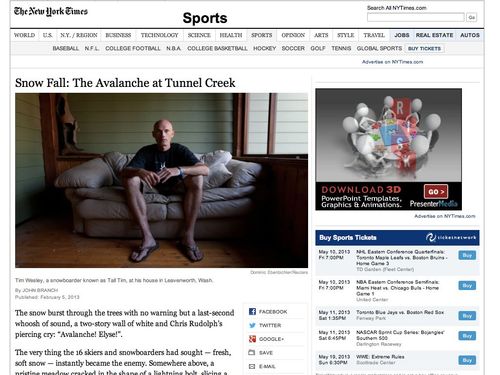Bloomberg News has gotten a big black eye for snooping on its customers, and Editor-In-Chief Matt Winkler apologizes in a column headlined “Holding Ourselves Accountable.”
We are defined by our words — and they applied to us when a Bloomberg LP customer expressed concern that Bloomberg News reporters had access to limited client information. Our client is right. Our reporters should not have access to any data considered proprietary. I am sorry they did. The error is inexcusable. Last month, we immediately changed our policy so that reporters now have no greater access to information than our customers have. Removing this access will have no effect on Bloomberg news-gathering.
Now let’s also be clear what our reporters had access to. First, they could see a user’s login history and when a login was created. Second, they could see high-level types of user functions on an aggregated basis, with no ability to look into specific security information. This is akin to being able to see how many times someone used Microsoft Word vs. Excel. And, finally, they could see information about help desk inquiries.
I’ll have more on this story soon.
— Aron Pilhofer of The New York Times shows what the paper’s landmark “Snow Fall” feature would have looked like if it had been slapped into the website’s normal template.
Here’s how the top looks as it actually appeared on nytimes.com:
And here’s Pilhofer’s image of how it would look like if the Times hadn’t gone all in on a new design for the story:
And:
The web is by and large an awful place for reading. But let’s hope we’ve hit a turning point, where squeezing clicks out of your readers comes after giving them a good reading experience.
— David Carr writes about The Advocate‘s battle against the Times-Picayune in New Orleans and what it says about the industry as a whole:
The much ballyhooed unmaking of daily newspapering seems to be unmaking itself, and there’s a reason for that. Most newspapers have hung onto the ancient practice of embedding prose on a page and throwing it in people’s yards because that’s where the money and the customers are for the time being.
The industry tried chasing clicks for a while to win back fleeing advertisers, decided it was a fool’s errand and is now turning to customers for revenue. But in order to charge people for news, you have to prosecute journalism.
The belief that historic monopolies will hold together just on the basis of inertia has proved to be wrong. Newspapers that have cut their operations beyond usefulness or quit delivering a daily print presence have suffered. The audience has to be earned every day.
That’s easier said than done, of course. Many newspapers may be too far gone. And even the ones that aren’t will have a hard time finding owners like Aaron Kushner and Eric Spitz, who believe that investing serious new money into newspaper journalism will pay off in the medium to long term.
Ryan Chittum is a former Wall Street Journal reporter, and deputy editor of The Audit, CJR’s business section. If you see notable business journalism, give him a heads-up at rc2538@columbia.edu. Follow him on Twitter at @ryanchittum.



